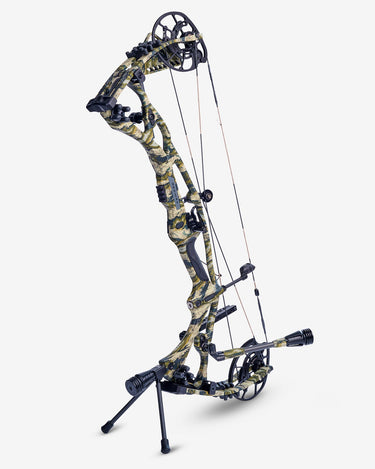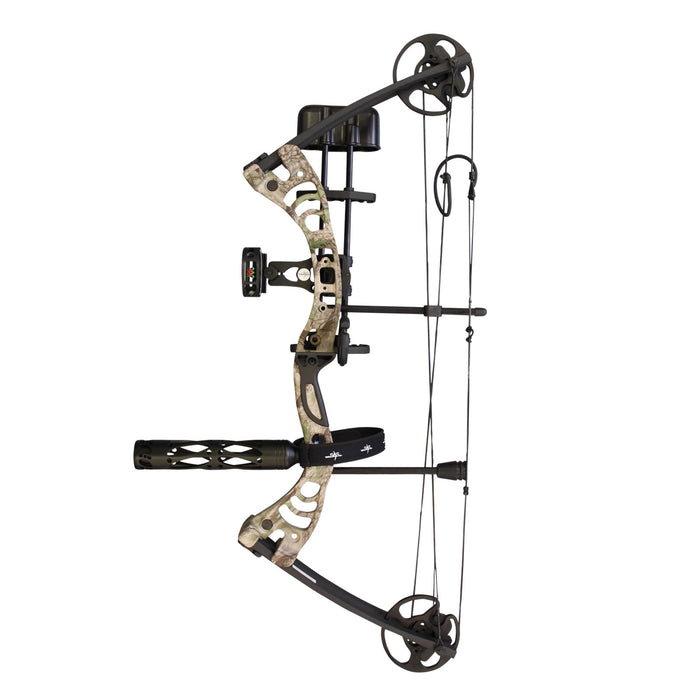Unlock Your Archery Potential with the Right Compound Bow Stabilizer
Wiki Article
Optimizing Your Archery Efficiency With the Right Substance Bow Stabilizer: a Thorough Review
In the world of precision, archery and uniformity are extremely important to attaining optimum efficiency. One often-overlooked yet essential part in boosting accuracy is the compound bow stabilizer. This simple tool plays a significant role in steadying your aim, reducing bow torque, and taking in resonances. Nevertheless, the performance of a stabilizer pivots on different variables, including weight, style, and positioning. By recognizing the nuances of choose and enhancing a compound bow stabilizer, archers can tweak their devices to boost their capturing experience to brand-new degrees of proficiency and control.Significance of Bow Stabilizers in Archery

Additionally, bow stabilizers assist in balancing the weight distribution of the bow, which can boost the archer's stability while shooting and intending. By adding weight to the front of the bow, stabilizers can lower the quantity of torque experienced upon release, resulting in a smoother and a lot more regulated shot - compound bow stabilizer. This weight distribution additionally assists in holding the bow steady for a longer period, allowing the archer to aim more precisely
Sorts Of Compound Bow Stabilizers
When taking into consideration the various sorts of substance bow stabilizers readily available, it is vital to recognize their distinct attributes and features to figure out the most appropriate option for optimizing archery efficiency. One of the most usual types of compound bow stabilizers consist of sidebar stabilizers, front stabilizers, and back stabilizers. Sidebar stabilizers affix to the sides of the riser and assistance in stabilizing the bow throughout the aiming process. Front stabilizers, also referred to as lengthy poles, are connected to the front of the riser and help in soaking up and lowering any vibrations triggered by the release of the arrowhead, hence boosting precision. Back stabilizers, additionally called back stabilizers, are placed to the rear of the bow and aid in counteracting the weight of various other accessories, resulting in improved stability and steady intending. In addition, some stabilizers feature flexible weights that enable archers to adjust the balance and feel of their bows according to their preferences, making them functional alternatives for archery fanatics of all levels.Elements to Consider When Choosing
In reviewing compound bow stabilizers, understanding the distinct features and functions of each type is important for making an educated choice on the most suitable option to enhance archery performance. When choosing a stabilizer, one should take into consideration the weight of the stabilizer itself. By carefully evaluating these elements, archers can pick a substance bow stabilizer that aligns you can try this out with their shooting style and optimizes their general performance on the archery range.
Installation and Change Tips
For optimal efficiency and accuracy in archery, grasping the installation and modification of your bow stabilizer is vital. Proper setup starts with connecting the stabilizer to the bow's riser, guaranteeing it is securely safeguarded.When changing the stabilizer, start with little step-by-step adjustments rather than drastic modifications. Pay interest to exactly how the bow responds to adjustments in stabilizer setups and make adjustments accordingly. Frequently check the stabilizer's tightness and overall condition to ensure it continues to work efficiently.
Upkeep and Treatment Standards

It is additionally vital to store your bow with the visite site stabilizer in a secure and safe location when not in use. Adhering to these maintenance and care standards will aid you get the most out of your bow stabilizer and boost your overall archery efficiency.
Final Thought
To conclude, selecting the right compound bow stabilizer is important for making the most of archery performance. Understanding the importance, types, factors to think about, installation and change suggestions, along with maintenance and treatment guidelines can substantially impact one's precision and uniformity in shooting. By choosing a stabilizer that matches private demands and choices, archers can enhance their general efficiency and achieve much better outcomes on the range or in competition.Bow stabilizers play an essential function in boosting an archer's accuracy and consistency by minimizing resonances and stabilizing the bow during the launch of an arrowhead - compound bow stabilizer.Additionally, bow stabilizers assist in stabilizing the weight circulation of the bow, which can boost the archer's stability while firing and intending. The most common types of compound bow stabilizers include sidebar stabilizers, front stabilizers, and back stabilizers. Back stabilizers, additionally called back stabilizers, are mounted to the back of the bow and assist in reversing the weight of various other devices, resulting in improved stability and steady aiming. When selecting a stabilizer, one need to take into consideration the weight of the stabilizer itself
Report this wiki page